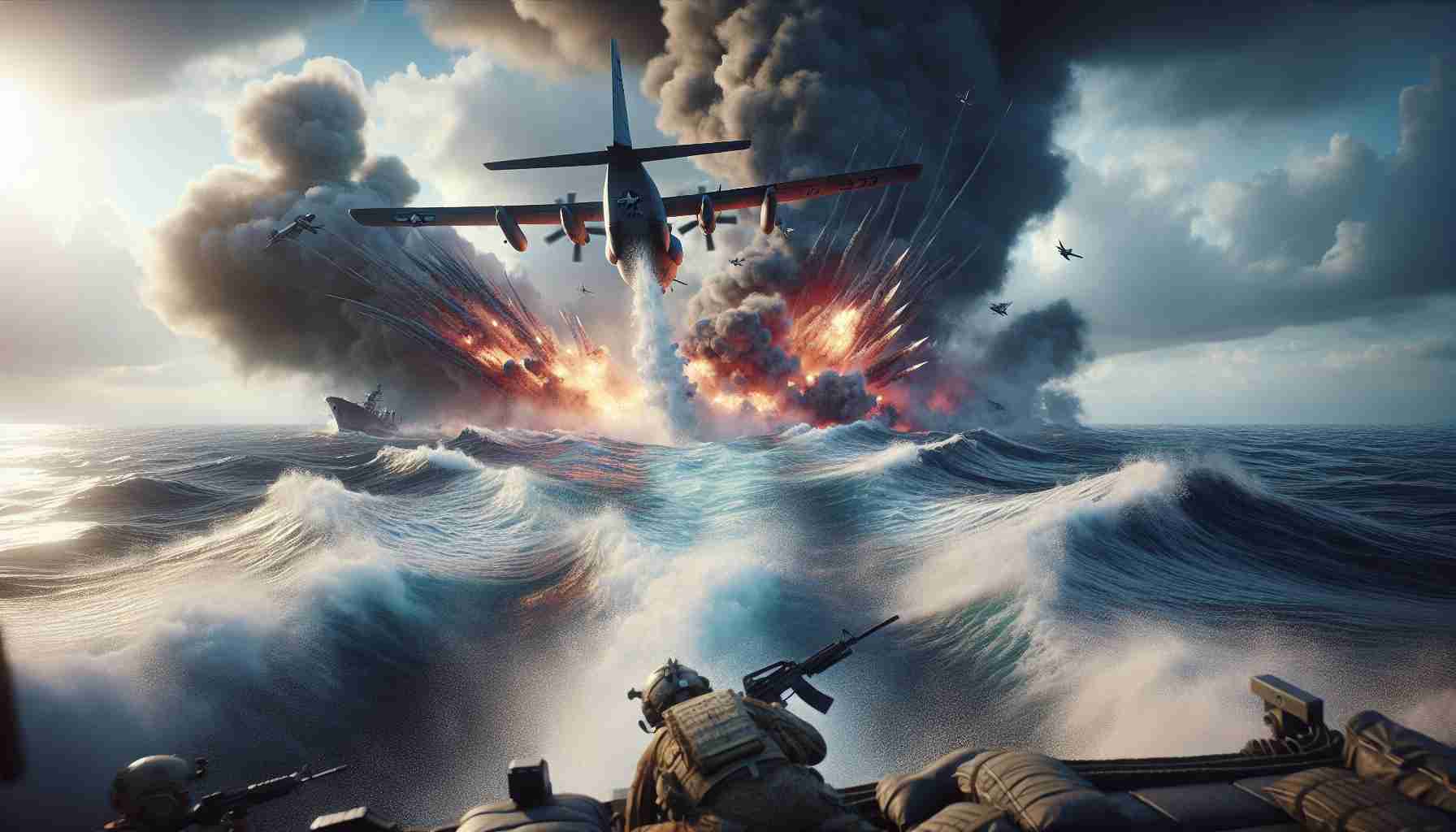In a shocking turn of events, a U.S. fighter jet was mistakenly shot down over the Red Sea during a complicated mission involving Yemen’s Houthi rebels. This incident, marking a significant threat to military personnel, underscores the volatility of the Red Sea corridor amidst ongoing Houthi attacks.
Critical Mistake in Combat Zone
Two pilots aboard the F/A-18 Super Hornet managed to eject safely, surviving a potential catastrophe, although one pilot sustained minor injuries. The jet, originating from the USS Harry S. Truman, was mistakenly hit by a U.S. naval cruiser, showcasing the intricate dangers of military operations in conflict-heavy regions. While the specific mission remains undisclosed, the aircraft’s trajectory from a Mideast carrier hints at the complexities of American operations against the Houthis.
Tensions in the Red Sea
The mishap highlights the escalating risks in the Red Sea as both U.S. and European forces patrol the area. The Houthis, backed by Iran, have launched attacks on various vessels, intensifying the stakes in one of the world’s critical shipping lanes. Their actions, purportedly in solidarity with Hamas, aim to retaliate against perceived Western and Israeli aggression.
Despite international military presence, the Houthis’ advanced weaponry keeps the region on edge, impacting global trade and security. This incident, coupled with geopolitical tensions, could further aggravate this volatile setting, challenging international efforts to stabilize the region.
As the region remains a hotspot of conflict, the potential for further incidents looms, presenting significant challenges for military and diplomatic efforts.
U.S. Fighter Jet Incident Sparks Global Military Concerns
The accidental downing of a U.S. fighter jet over the Red Sea has heightened global concerns over military operations and their security implications in conflict-prone zones. This incident, while isolated, sheds light on broader issues that military forces face when navigating complex environments where allies and adversaries operate in close proximity.
Enhanced Focus on Military Communication and Coordination
This recent incident underscores the critical need for enhanced communication and coordination among military assets operating in the Red Sea. The mishap has prompted experts to call for a thorough review of current protocols to prevent similar occurrences. Advanced training and technological solutions are being evaluated to minimize the risk of friendly fire and improve situational awareness. Enhancements in real-time data sharing, identification systems, and protocol standardization across allied forces are under consideration.
Strategic Implications of Houthi Activities
The ongoing tensions in the Red Sea corridor are largely influenced by the actions of the Houthi rebels. Their use of advanced weaponry and their strategic positioning as proxies aligned with Iranian interests have introduced significant challenges to international security efforts. These dynamics emphasize the importance of understanding the regional power plays and the impact they have on global shipping and trade routes. Security experts warn that failure to address these issues could lead to further destabilization and disruptions in global commerce.
Innovation in Military Technology: Addressing Threats
In light of recent events, there is a growing interest in technological innovations that can assist in resolving some of the operational challenges posed by the Red Sea’s volatile environment. Developments in drone technology, autonomous systems, and artificial intelligence are part of contemporary strategies to improve surveillance and defense capabilities. These technologies promise to enhance operational efficiency and reduce human error during missions in complex regions.
Predictive Trends in Red Sea Security
As global powers remain engaged in maintaining stability in the Red Sea, predictive trends indicate an increased collaboration between Western military forces and regional partners. These alliances are expected to focus on intelligence sharing and cooperative approaches to mitigate risks and safeguard critical shipping lanes. Additionally, diplomatic engagements aiming to ease tensions and enhance regional security frameworks are predicted to evolve in the coming years.
Link to Broader Geopolitical Dynamics
While the downing of the U.S. fighter jet is concerning on its own, it also stands as a testament to the broader geopolitical dynamics at play in the Middle East. The incident might influence defense policies and strategic postures in the region, with potential implications for international relations and military strategies.
For those interested in the latest developments in global security, military innovations, and geopolitical analysis, visit authoritative sites like Defense.gov for comprehensive insights and updates.







